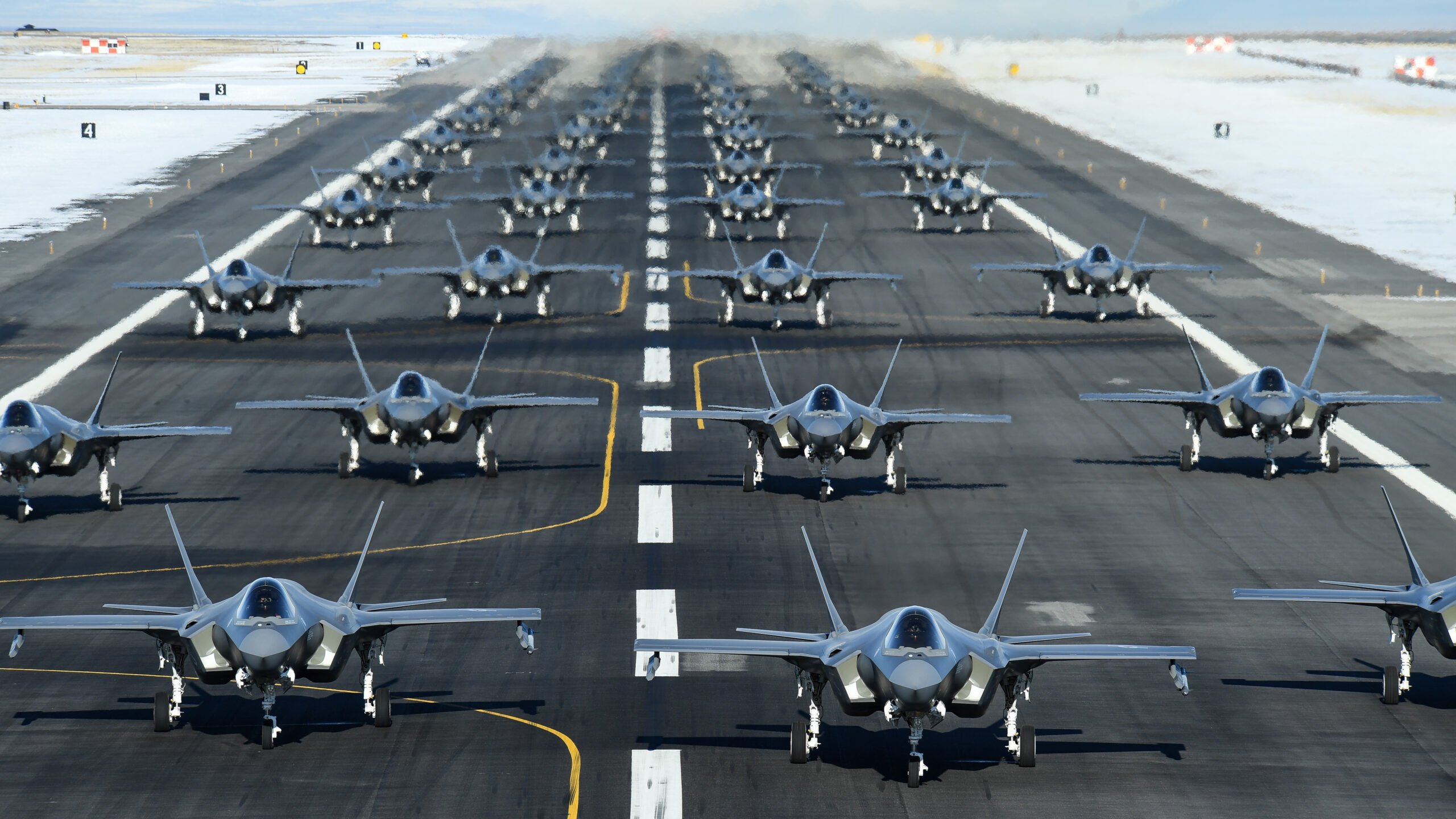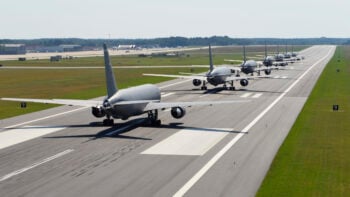
The active duty 388th and Reserve 419th Fighter Wings conducted an F-35 Lightning II Combat Power Exercise at Hill Air Force Base, Utah, Jan. 6, 2020. (U.S. Air Force/R. Nial Bradshaw)
WASHINGTON — The US Air Force has returned its F-35 fleet to normal operations following the completion of a safety review of its ejection seats.
On July 29, Breaking Defense first reported that the service’s Air Combat Command had ordered a stand-down of its F-35A models in order to check all the ejection seats after a potential issue with defective cartridge actuated devices — explosive cartridges used inside ejection seats to help propel the seat out of an aircraft during an emergency. According to the Pentagon, certain production lots of CADs used in Martin-Baker ejection seats had been identified by the company as being defective and needing replacement.
At the time it was unknown exactly how many seats had a CAD issue, and how long it would take to replace them. For the Air Force’s F-35s, it turned out, a small number of CADs were identified as “suspect” but even those were later deemed OK.
“The Air Force has completed the Time Compliance Technical Directive on all F-35 ejection seat initiator cartridges, with a few exceptions, and all aircraft have resumed normal operations,” Capt. Erica Feehan, ACC spokeswoman, said in a Monday statement. “Across the Air Force, technicians inspected a total of 706 cartridges, which came from 349 F-35s as well as additional supply. Four cartridges were found to be suspect and have been replaced. Those four suspect cartridges have since undergone further inspection and were determined compliant.”
Feehan added that some aircraft currently in depot have not gone through the testing yet, but will do so before they are returned to flight status.
The F-35 was hardly alone in dealing with the CAD challenge. Two hundred and three T-38 and 76 T-6 aircraft used in Air Force training were also temporarily shut down to investigate the issue, while the Navy stood down a “limited range of lot numbers” used in F/A-18B/C/D Hornets, F/A-18E/F Super Hornets, E/A-18G Growlers, and T-45 Goshawk and F-5 Tiger II training aircraft.
Army inching towards late FY25 Chinook Block II full-rate production contract
Boeing recently announced the Block II helo’s first maiden flight and plans to deliver the first production aircraft to the service in the coming weeks.


























